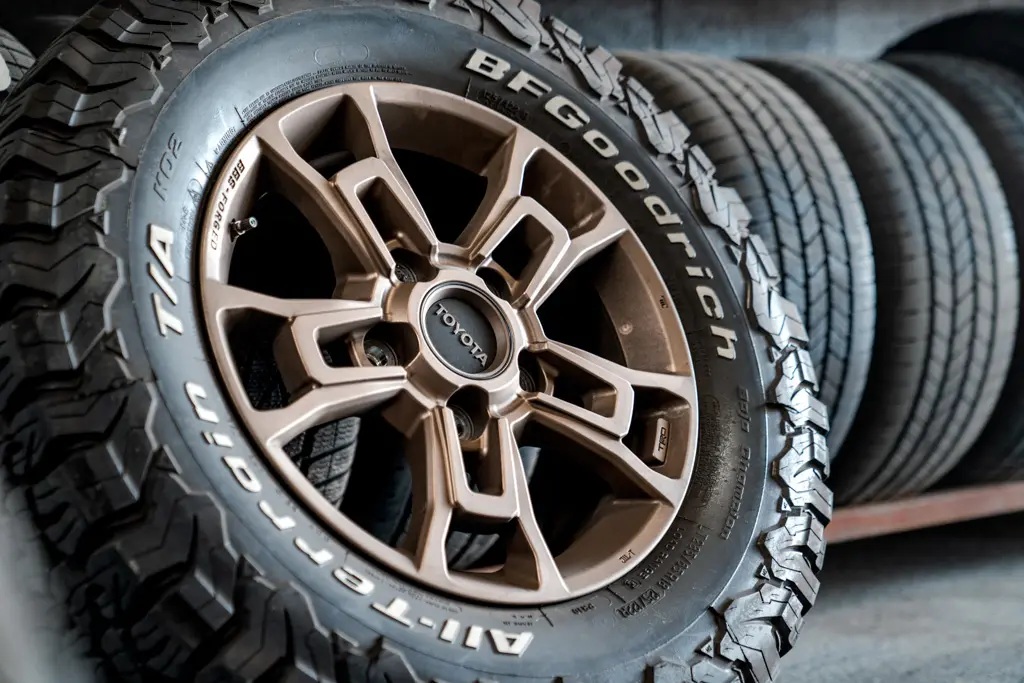When comparing wheel and tyre fitment, several key factors need to be considered to ensure compatibility and proper performance. Here’s a breakdown of the key elements that affect the fitment of wheels and tires:
1. Wheel Size
- Diameter: Measured in inches (e.g., 16″, 17″, 18″). The diameter of the wheel should be appropriate for the tire size.
- Width: The width of the wheel is measured from the inner edges of the rim. Wider wheels require wider tires.
- Offset: This refers to how the wheel is positioned relative to the vehicle’s hub. A positive offset means the wheel sits closer to the car’s body, while a negative offset pushes the wheel further out.
2. Tyre Size
- Tyre Width: This is the measurement of the tyres width, typically given in millimetres (e.g., 205mm, 225mm). A wider tire will require a wider wheel.
- Aspect Ratio (Profile): This is the ratio of the tyres sidewall height to its width. For example, a tire with a 50-profile means the sidewall height is 50% of the tyres width.
- Diameter: The overall diameter of the tire must match the wheel’s diameter. For example, a 225/50R17 tyre fits a 17-inch diameter wheel.
3. Bolt Pattern (PCD)
- This is the number of bolt holes on the wheel and the distance between them. Common patterns include 4×100, 5×114.3, etc. It’s crucial to match the bolt pattern of the wheel with that of the vehicle to ensure proper installation.
4. Wheel Width vs. Tyre Width
- The width of the wheel should match the width of the tyre. Tyres are designed to fit certain wheel widths. A tire that is too wide for the wheel may result in poor handling, while a tire that is too narrow may cause issues with tire wear.
5. Overall Diameter
- The total diameter of the wheel and tyre combination must fit within the wheel well of the vehicle without causing rubbing or interference with suspension components. If you increase the wheel diameter, you may need to decrease the profile of the tyre to maintain overall diameter and prevent affecting the car’s speedometer and handling.
6. Load Rating
- Ensure the tyres load rating matches or exceeds the vehicle’s required load capacity. A higher load rating tire can be used, but using one that is too low can be dangerous.
7. Speed Rating
- Tyres come with speed ratings indicating the maximum safe speed they can handle. Ensure that the tire’s speed rating is appropriate for your vehicle’s performance needs.
8. Clearance Issues
- When fitting new wheels and tyres, check for sufficient clearance around the tires, especially when turning or under suspension load. This can prevent rubbing on fenders or suspension components.
Example of Wheel and Tire Fitments
For instance, if you are looking at fitting a 17×8-inch wheel, you might pair it with a tyre such as 225/45R17. Here’s why:
- The 17″ diameter matches the wheel diameter.
- The 8″ width is appropriate for the 225mm tyre width (generally, 7-8 inch-wide wheels fit this tire width).
- The aspect ratio of 45 means the sidewall height is 45% of the tyre width, giving you a good balance of comfort and performance.
Conclusion
To ensure a correct wheel and tyre fitment, always check the vehicle’s specifications, including the recommended tyre size, wheel width, and offset, and cross-reference these with the options you’re considering. All the wheel and tyre packages that we sell will enable perfect fitment on your vehicle without compromising on performance and safety.
Get in touch with a member of our team today on – Feel free to give us a call on 03301338271 or an email: sales@alloyhub.com.




